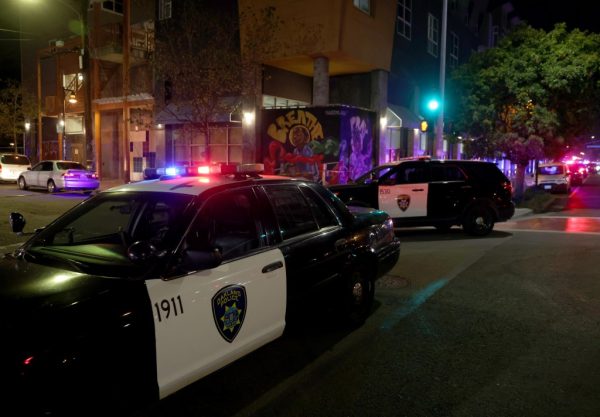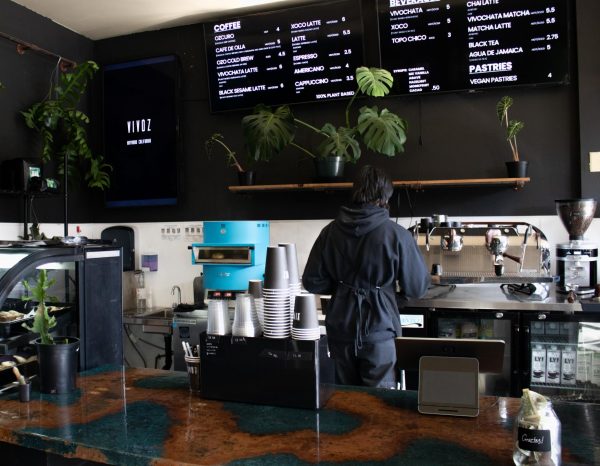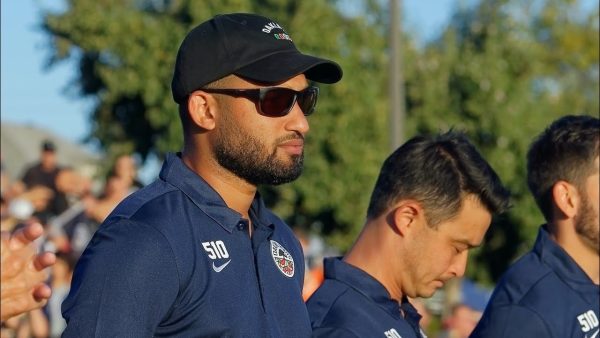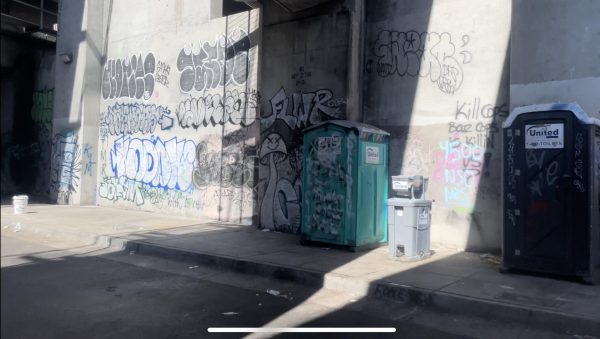E. Guy Warren Pushed for Hayward Campus Location
[hana-flv-player video=”https://thepioneeronline.com/wp-content/uploads/2013/09/WarrenHall_History_3.flv”/]Without Earl Guy Warren, Warren Hall along with the campus would have never existed.
More than a month later, E. Guy Warren Hall’s debris are still being broken down and carried away. Yet the man behind the name still remains largely unknown.
Warren played an integral role in lobbying for Cal State East Bay’s location, according to Hidden Gems of CSUEB’s website, which stated he contributed thousands of his own dollars for engineering studies at the Hayward location.
“As time went on there was talk about the CSU system building a campus somewhere in the Bay Area and there was a big fight,” remembered Warren’s grandson Robert Warren, 45. “And he became very involved. He was chair of a committee that organized the community to step up and get behind it and they really did.”
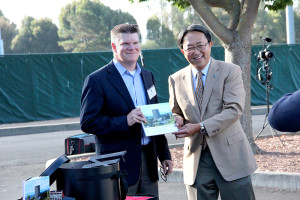
with President Leroy Morishita at implosion event.
Prior to the Hayward campus, 15 different locations were proposed for a new college within the California State University, and Hauschildt Ranch – the current location of the main campus, seemed to fall under the radar, according to the Hidden Gems website.
“The amazing thing that has happened, is that the campus is thriving,” said Robert Warren. “It’s doing great; and that was really the whole intention of all those community leaders at the time of my grandfather’s involvement were trying to do, they were trying to get the university system to build a campus in Hayward.”
It wasn’t until Earl Warren’s efforts in cooperation with the community that Hayward’s location came into consideration for the then named State College for Alameda County, according to Robert Warren.
“Even though it was a small town, residents wrote 10,000 letters to the governor; they really hounded them,” said Robert who explained “it’s really not easy to get 10,000 emails from a community now.”
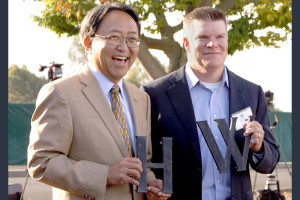
the “W” and “H” from Warren Hall.
Robert said his grandfather was a fourth generation Hayward-Castro Valley resident during a time when the community saw an influx of residents due to returning war veterans. “After World War II, Hayward experienced an unprecedented growth from 14,272 to 72,000 people in just one decade,” Hayward’s Historical Society’s website states.
The community activist recognized the growth and importance of education and was elected to the Hayward School Board in 1936, Robert recalled. During his time on the school board, Earl helped open eight high schools within a ten-year period Robert said.
“When I was a young kid I used to go to different community events with my grandmother who lived ten years after my grandfather,” said Robert. I remember at least two or three people, [who] came up to me at some point and said your grandfather was my best friend.”
Robert reminisced about how his grandfather was charismatic and how he touched the community.
As a father of five, Earl was actively involved in education, but reached out into the community added Robert, who explained he was an avid rancher.
“He had a ranch that he loved so dearly and he brought the community out to the ranch all the time in Castro Valley,” said Robert. “And I remember him wearing a cowboy hat; I remember him going out to dinner in the canyon every Sunday night.”
Unfortunately, Earl died in 1972, shortly after the Warren Hall was completed, but his legacy will live on in the very foundation of our university.









